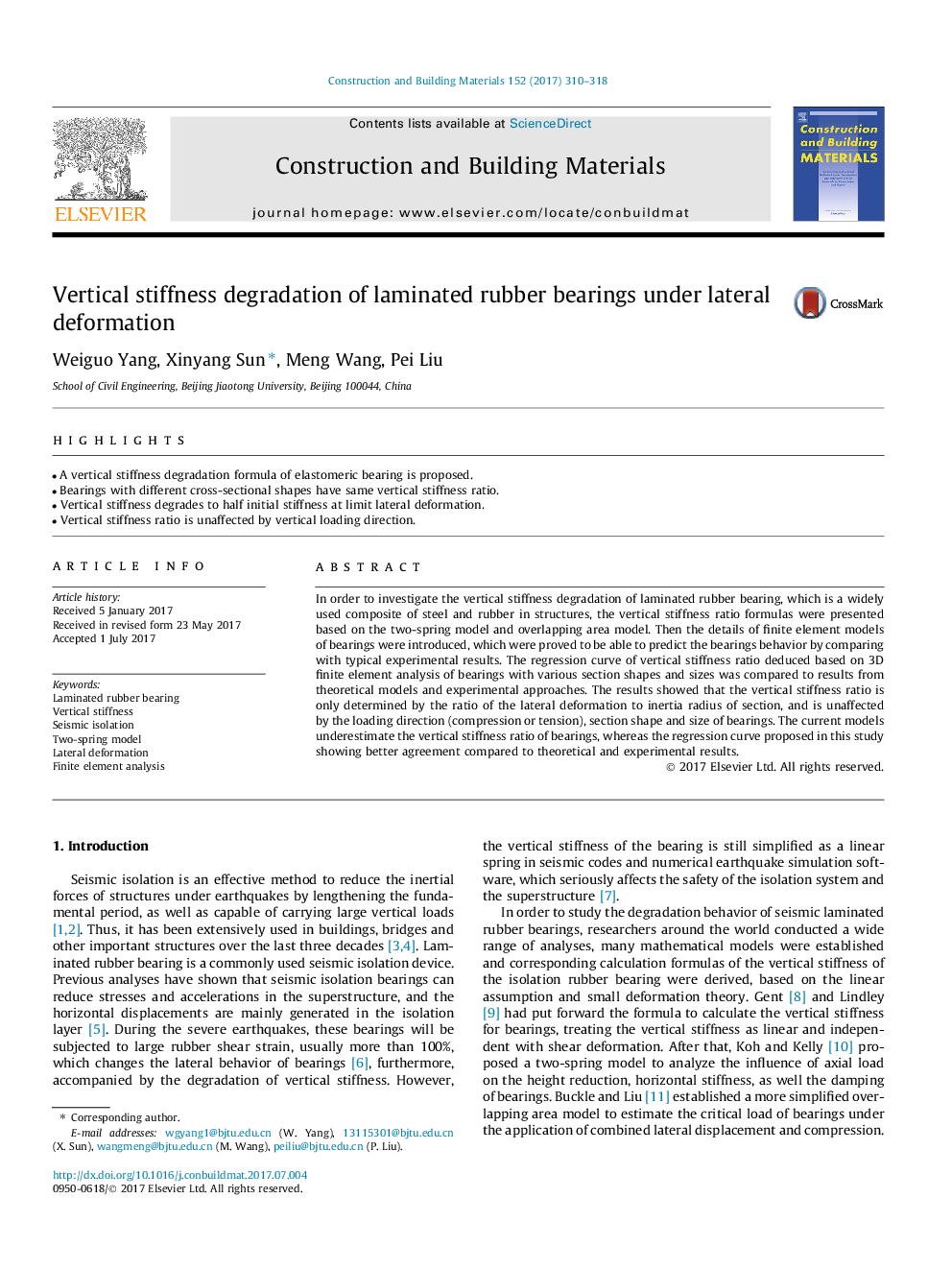| Article ID | Journal | Published Year | Pages | File Type |
|---|---|---|---|---|
| 4912770 | Construction and Building Materials | 2017 | 9 Pages |
Abstract
In order to investigate the vertical stiffness degradation of laminated rubber bearing, which is a widely used composite of steel and rubber in structures, the vertical stiffness ratio formulas were presented based on the two-spring model and overlapping area model. Then the details of finite element models of bearings were introduced, which were proved to be able to predict the bearings behavior by comparing with typical experimental results. The regression curve of vertical stiffness ratio deduced based on 3D finite element analysis of bearings with various section shapes and sizes was compared to results from theoretical models and experimental approaches. The results showed that the vertical stiffness ratio is only determined by the ratio of the lateral deformation to inertia radius of section, and is unaffected by the loading direction (compression or tension), section shape and size of bearings. The current models underestimate the vertical stiffness ratio of bearings, whereas the regression curve proposed in this study showing better agreement compared to theoretical and experimental results.
Keywords
Related Topics
Physical Sciences and Engineering
Engineering
Civil and Structural Engineering
Authors
Weiguo Yang, Xinyang Sun, Meng Wang, Pei Liu,
